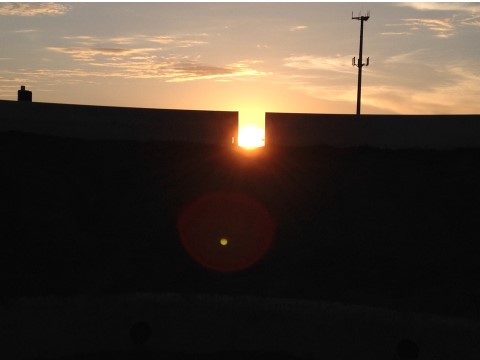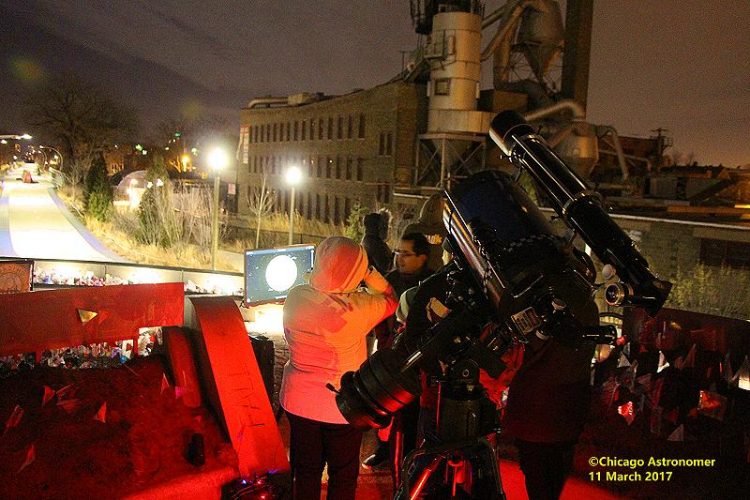Science at The 606
Designers of The 606 park and trail system planned for public engagement in both formal and informal science explorations. The 606 engages trail visitors in science explorations in three distinct ways:
Citizen Science Projects, Drop-In science, and Research partnerships.
CITIZEN SCIENCE PROJECTS
Citizen science, community science, volunteer monitoring, or crowd-sourced science. No matter what you call it, this type of activity offers community members interesting ways to participate and contribute to scientific research.
Environmental Sentinel is the title of the citizen science project of The 606. Community members make regular observations of specific plants along the elevated trail and in the ground-level parks. Volunteers record and share the data they collect with a national database managed by the USA National Phenology Network.
Phenology is the study of recurring plant and animal lifecycle events, especially their timing and relationship to weather and climate. Examples include when birds migrate, insects emerge, and plants leaf out and flower. Phenology observations are key to understanding how species and landscape respond to climate change. Volunteers use protocols developed by the USA-National Phenology Network.
Frances Whitehead, The 606 lead artist, developed this project. She wondered how Lake Michigan might affect the bloom-times of flowering trees planted the length of the trail. Could the blossoms visualize the famous ‘lake effect’? Further, could monitoring the trees’ seasonal phenophases help us understand Chicago’s microclimate over time? Volunteers monitor specific serviceberry and lilac shrubs for this project. Participation in hands-on, place-based citizen science projects, like the phenology project of The 606, can help youth and adults deepen their connections with and understanding of nature, inspire stewardship for neighborhood parks, and contribute to scientific research. Follow this link to learn more about this project and how to participate.

DROP-IN SCIENCE
The 606 project designers collaborated with astronomers from the Adler Planetarium to ensure that lighting angles and tree placements offered trail visitors great views of the sky for stargazing. The result is a spiraling path that leads to the Exelon Observatory, an elevated space encircled with a stainless steel, notched blade located at the western end of The 606 (1800 N Ridgeway Ave.) The 606’s lead artist, Frances Whitehead, designed this observatory with inspiration from the ancient Thirteen Towers solar observatory located in Chankillo, Peru. The observatory blade’s three rectangular notches visually frame the sunsets on the first day of each new season: the summer solstice, the winter solstice, and the vernal and autumnal equinoxes.

Stargazing on The 606
For the Love of Stars, are free, awe-inspiring stargazing events for the community. On the second Friday of the month, the Chicago Park District’s resident astronomer, Chicago Astronomer Joe Guzman, and friends bring their telescopes to the Exelon Observatory to share remarkable views of stars, planets, and the moon, and swap stories about celestial events. These drop-in science events are great for children and adults visiting The 606 and its Bloomingdale Trail.

Follow the link for program details.
RESEARCH PARTNERSHIPS
The 606 and its Bloomingdale Trail are the setting for several investigations designed to learn more about nature in urban spaces.
Lincoln Park Zoo
Scientists from the Lincoln Park Zoo’s Urban Wildlife Institute study how wildlife manage in the changing environments of cities. We wondered how wildlife might use the designed landscape of The 606 park and trail system, so we are collaborating with the UWI to learn more. Each season UWI researchers place motion-tripped cameras in two locations along the trail to photograph wildlife activity. In a separate location, three times each year, researchers also install a passive, acoustic monitoring device to learn about bat populations around the trail. Bats are facing many threats, and understanding how they are living in urban environments will lead to improved conservation efforts. To date, The 606 monitoring devices have detected four species of bats, as well as squirrels, domestic cats and dogs, rabbits, and several bird species.
To learn more about the bat monitoring data, click here Bat Monitoring Data.
What happens to all the photographs of animals taken by the camera along The 606 as well as the cameras across the Chicago region? The images are collected and the animals in the images need to be identified. You can help. Follow the link below to learn more about you can help identify animals in the images collected by LPZ cameras for Chicago Wildlife Watch.
The Array of Things
Look up near the arched bridge over Milwaukee Avenue at Leavitt Street and you will see a white dome-shaped device attached to a light pole. This is one device or node in the network of 500 nodes installed on poles and buildings across the city as part of the Array of Things. These nodes measure things like temperature, light levels, vibrations, and ozone, as well as standing water, cloud cover, and the number of cars, bikes, and people that pass by. Urban planners, policy makers, educators, and community groups may freely access the data collected across the city. These data help offer a dynamic picture of how Chicago works today and rich information for future planning. The Array of Things grew out of a partnership among the University of Chicago, Argonne National Laboratory, and the City of Chicago. For more information visit:https://arrayofthings.github.io/
Pollinator Diversity of the Serviceberries
Which critters are pollinating the 450+ serviceberry shrubs (Amelanchier x grandiflora Autumn Brilliance) of The 606? We don’t know, but we’re going to find out with the help of local researchers. In spring 2019, researcher Paul CaraDonna, PhD, of the Chicago Botanic Garden and Northwestern University, and his team of students are documenting the diversity of wild pollinators visiting the trail’s serviceberries. In the first season of the project, researchers will generate a list of serviceberry pollinators. This pollinator list may be used to create a new pollinator component to complement the existing serviceberry phenology study, Environmental Sentinel. These data may also have life beyond The 606 pollinator study in future investigations of the ecological factors that help support wild pollinators across Chicago.

